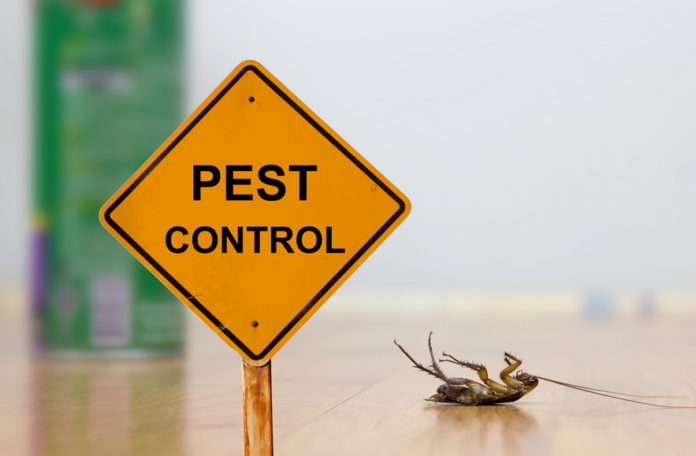Pests are the best at causing problems. There are roughly 124 million occupied housing units in America. In a 2021 survey, 14 million homeowners reported seeing roaches in their homes over the previous 12 months.
Every homeowner must understand how pest control works. It goes beyond calling an exterminator up on the phone.
How can you prevent an infestation from occurring? What should you do to stop one in its tracks? When should you give an exterminator a call?
Answer these questions and you can eliminate pests from damaging your home and making you sick. Here is your quick guide.
Pest Prevention
The easiest pest infestation to solve is one that never happens. Pest prevention steps are easy to follow, and they can mitigate an infestation that is already occurring.
Nearly all pests enter a house to search for food and water. You should put containers of food on shelves off the floor and behind thick doors. You should fix any dripping pipes and remove sources of standing water.
Clutter can provide shelter for pests, including rodents. You should remove stacks of newspapers and clothes from your basement. You should also seal off areas where your pests can hide such as spaces around pipes.
If you are bringing something in from outside, you should check to see if there are any pests in it. Even one bug can lead to a pest infestation problem. Even if you don’t notice anything, you should spray the item off with a hose to remove any feces or eggs.
Identification
A bug infestation problem requires different resources than a rodent problem. This makes it necessary to identify the pest inside your home.
Before an infestation occurs, you should do your research about pests online. You can visit the websites of pest control companies for detailed guides on rats and bugs.
The easiest way to identify your pest problem is to find the pests themselves. You can spot mice or bugs crawling on your floor. Get a good photograph of the pest and zoom in on it so you get a good look.
If you can’t find a pest, you can look for other signs. Rodents like to build nests with fabric and paper. Ants build nests in piles of dirt while carpenter bees burrow tunnels through wooden surfaces.
Chewed items may be a sign of rodents or wood-consuming bugs like carpenter bees. Droppings usually indicate rodents, though cockroaches can produce them as well.
If you spot a nest or a pile of droppings, you should look at the gaps in your walls and floor for further signs. You should not assume you have an infestation just because droppings have been made. A pest may have left the droppings and then exited your house.
Suppression
Suppression involves reducing pests down to an acceptable level. It can be hard to kill all pests in a home, especially a very large property. You should set a threshold level in your mind that you want to reach.
You should then take several steps to suppress pests. Following prevention measures is one step you can take.
Pesticides will kill most insects, including cockroaches. You should find a pesticide with active ingredients that will deter pests and kill microbes. You can experience a bacterial infection even after your pests have died.
If you have rodents, you can set rodent traps around your house. The traps will contain or kill the mice, and you then have to throw them away.
If you have pests outside, you need to limit their access to soil and plants. You can place covers over your soil or mow any weeds growing in your garden.
Eradication
Though eradication is difficult, it is often necessary. Food processing facilities, schools, and health care facilities should take steps to eradicate all pests. You may want to remove all pests out of your home if you are immunocompromised or concerned about aesthetics.
Eradication is best achieved through hiring an exterminator. They will come in and use strong pesticides to kill insects in your building. They will also go around the outside of your home and kill all pests they see.
Pest extermination must occur room by room, and pesticides can be toxic. You should be prepared to leave your home for a short period of time.
Monitoring
Your job is not done once the exterminator gives you the all-clear. You need to monitor your home for signs of another infestation.
You should visit your attic and basement multiple times a week. You should check the floor and walls for any signs of a problem. You should also move objects around so pests have less room to build nests.
Once you’ve checked interior spaces, you need to go outside. You should look in the dirt and soil for any bugs or eggs. If you notice tunnels, you should close them off with clay.
Keep some basic pesticides on hand. When in doubt, apply them and see what happens next.
The Essentials of Pest Control
Pest control can be a little hard to achieve. You should always be engaged in pest prevention. Seal off sources of food, water, and shelter from pests.
You need to know what pests you have. Look for the signs of an infestation and find the pests themselves.
Once you’ve found them, you need to suppress them with pesticides. If you want comprehensive pest extermination, you need to hire a professional. Even after the extermination, you should monitor your house for any problems.
Eliminating pests requires a lot of knowledge. Read more pest control guides by following our coverage.










